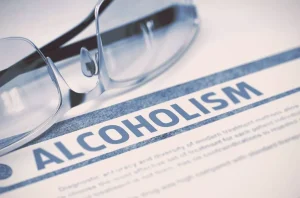
Those syndromes arise directly from adaptations made within nerve cell communication systems that are targets of alcohol in the brain. Among its actions, alcohol acutely facilitates the activity of GABAA receptor function and blocks NMDA receptor activity. The adaptations within these systems contribute to withdrawal-related symptoms, seizures, and neurotoxicity. Visual, auditory, and tactile hallucinations are frequently experienced in acute, complicated AW or DT’s. Hallucinations that are not connected with DT’s occur in 3 to 10 percent of patients during severe AW from 12 hours to 7 days after cessation or reduction of alcohol consumption (Platz et al. 1995).
Treating and managing alcohol withdrawal symptoms
Laboratory studies suggest that valproic acid may inhibit GABA metabolism and activate GABA synthesis (Fawcett 1989). In addition, data indicate that carbamezapine decreases the flow of glutamate into slices of the hippocampus, a part of the brain involved in seizures (Olpe et al. 1985). Therefore carbamezapine and valproic acid prevent alcohol withdrawal seizures and kindling.
How is alcohol withdrawal syndrome diagnosed?
People who are dependent on alcohol may experience a strong, often uncontrollable, desire to drink and feel they’re unable to function without alcohol. Alcohol withdrawal symptoms can start as early as two hours after your last drink, but it’s most likely to start between six hours to a day after your last drink, according to guidelines from American Family Physician. As the seizure ends, the person may lose bowel or bladder control due to relaxation of the body. Awareness or consciousness return slowly after the alcohol withdrawal seizure ends. The person may appear confused, sleepy, irritable, embarrassed, or frightened afterwards.
Stage 3: 24 to 48 hours after last drink
While other types of alcohol are poisonous to humans, it’s thought that we developed the ability to drink ethanol because it’s naturally produced in fallen fruit. The production and consumption of alcohol have also been practiced for thousands of years. When you drink heavily, it can lead to various serious consequences, including dependence and addiction. The more you drink on a regular basis, the more you’re likely to be affected by withdrawal symptoms. To keep health risks from alcohol to a low level, the UK Chief Medical Officers (CMOs) advise it is safest not to drink more than 14 units a week on a regular basis. It’s rare for people going through alcohol withdrawal to experience hallucinations more than 48 hours after their last drink.

In addition, alcoholics show increased incidence of interrupted breathing during sleep compared with the general population. These sleep disturbances can cause daytime drowsiness, reducing the efficiency of performance of daytime tasks and increasing the risk of car crashes (Aldrich in press). The main management for severe symptoms is long-acting benzodiazepines — typically IV diazepam or IV lorazepam. When you stop consuming alcohol after prolonged, heavy use, your CNS can’t respond or regulate itself fast enough.
These patients, as well as a substantial number of other people who stop drinking without seeking professional treatment, experience alcohol withdrawal (AW). AW is a clinical syndrome that affects people accustomed to regular alcohol intake who either decrease their alcohol consumption or stop drinking completely. Consequently, when the alcohol level is suddenly lowered, the brain remains in a hyperactive, or hyperexcited, state, causing https://ecosoberhouse.com/ withdrawal syndrome. The spectrum of alcohol withdrawal ranges from a mild physiologic response to seizures and death. More severe responses are seen in patients with prior episodes of withdrawal, a phenomenon known as “kindling” [26], or other underlying acute conditions. Chronic alcohol use has a depressant effect on γ-aminobutyric acid transmission with compensatory increased N-methyl-d-aspartate and adrenergic activity [25,27].
What is the mortality rate of alcohol withdrawal syndrome?
Behavioral health treatment for alcohol problems is often (but not always) covered by insurance. In the United States, most states have low-cost or free rehabilitation programs are alcohol withdrawal seizures dangerous for those who are uninsured. This process temporarily restores homeostasis, or chemical balance, in an effort to counteract the impact of long-term alcohol use on the brain.
Mild Symptoms
AWS is more common in adults, but children and teenagers who drink excessively may also experience the symptoms. You’re also at risk for AWS if you’ve previously had withdrawal symptoms or needed medical detox for a drinking problem. The mortality rate for delirium tremens, the most severe form of alcohol withdrawal, is around 37% without treatment. In people with epilepsy, drinking three or more drinks may increase the risk of seizures. Seizures may occur in around 5% of people with alcohol withdrawal syndrome.
- In most cases, alcohol affects these targets only at high, suprapharmacologic concentrations.
- These symptoms can quickly progress to cardiovascular collapse and death without timely treatment.
- As your body adjusts to life without the medication, you may be given medication and therapy options to help you get through the withdrawal phase as safely as possible.
It typically begins within a few hours of suddenly stopping or reducing your intake of alcohol. Hallucinosis, which may occur within 1 or 2 days of decreasing or abstaining from alcohol intake, is a complication distinct from DT’s. Patients with alcohol hallucinosis see, hear, or feel things that are not there even though they are fully conscious and aware of their surroundings. Moreover, hallucinosis is not necessarily preceded by various physiological changes (i.e., autonomic signs). In fact, stopping drinking is a great way to improve the quality of your sleep.

Alcohol withdrawal seizures typically develop 6-48 hours after you stop drinking, but they can occur 2-7 days after your last drink. The seizures can develop abruptly without warning, and multiple seizures can occur within a 6- to 8-hour period. Other common complications of chronic alcoholism and alcohol withdrawal include pneumonia, acute respiratory distress syndrome, sepsis, upper gastrointestinal bleeding, necrotizing pancreatitis, and acute and chronic liver disease [38].